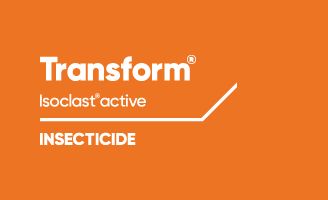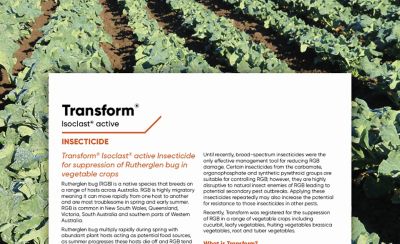Mr Koch said the lack of coverage in the top portion of the canopy is an area for concern when applying chemistry to an orchard.
“New chemistry such as Transform® Isoclast active insecticide is highly selective and very targeted,” he said. “There are differences in the way that selective chemistry works compared to older, broad spectrum chemistry which are typically not compatible with integrated pest management systems (IPM).
“We need to be able to deliver the chemistry to where it is needed in the tree canopy. “It is essential that we get good coverage where the pests are residing to be able to control them.”
He said the field day was highly valuable to understand the variables that exist with machinery and the operator. After several attempts using the Spray Efficacy Tool, the team were able to successfully improve spray coverage throughout the canopy using the calibration principles set out in the spray optimisation manual supplied by Corteva Agriscience.
Corteva Agriscience Northern Area Sales Leader, Ian Corr, said the field day demonstrated the importance of good coverage, particularly with newer products.
“We want to make sure that we can justify the cost and the performance of these products by ensuring that the application method is really getting the product to where it needs to be,” he said.
“When you are dealing with three dimensional crops, there are a lot of factors at play and it is not just about water volume or tree height. It is about so many things, including the shapes of the trees, the spacings, the size of the fan, speed and air volume, pressure of nozzles, type of droplet and distribution.”
Mr Corr said the water sensitive paper test was an accurate picture of where the spray is being deposited.
“It doesn't always translate to exact efficacy but what we can say is if there isn’t any spray getting to the target, we know there's going to be an efficacy problem,” he said.
“What we see is generally a trade-off in terms of getting enough air and water up into the canopy, whilst still allowing the orchardists to operate at an efficient speed to ensure that they can get around the orchard in a reasonable amount of time to be effective in their roles."
Corteva Agriscience will continue to work with the industry in a range of tree crops in a stewardship capacity to ensure farmers get the best possible results from their crop protection.
Download a copy of the Orchard Spray Guide
?$galleryImage_desktop$)
?$galleryImage_desktop$)
?$galleryImage_desktop$)

?$galleryImage_desktop$)
?$galleryImage_desktop$)


